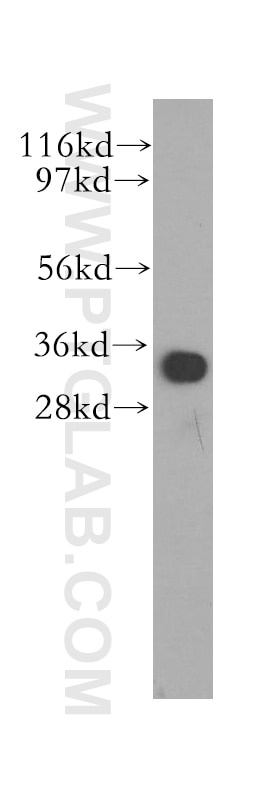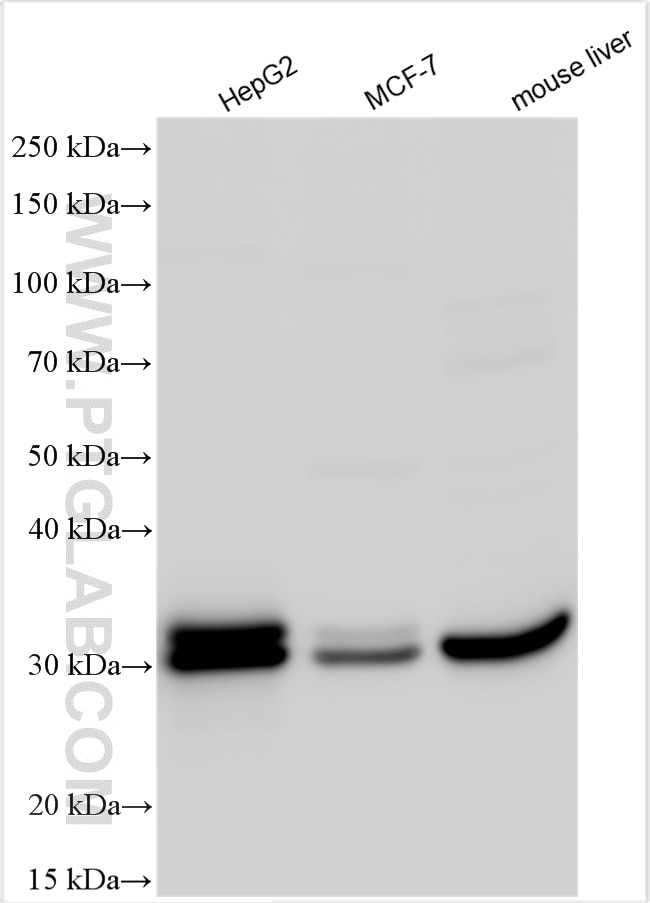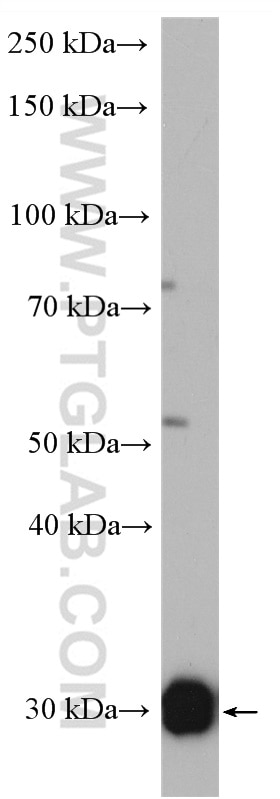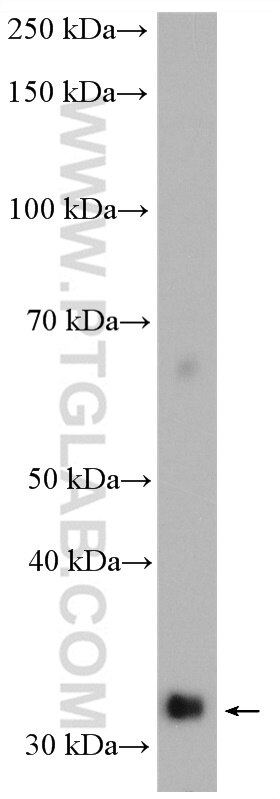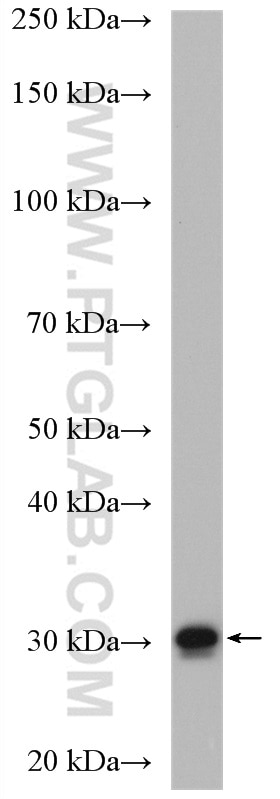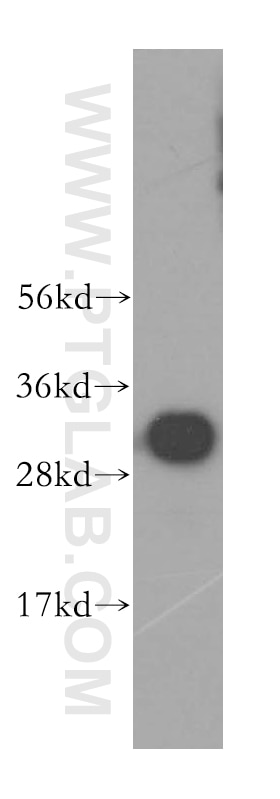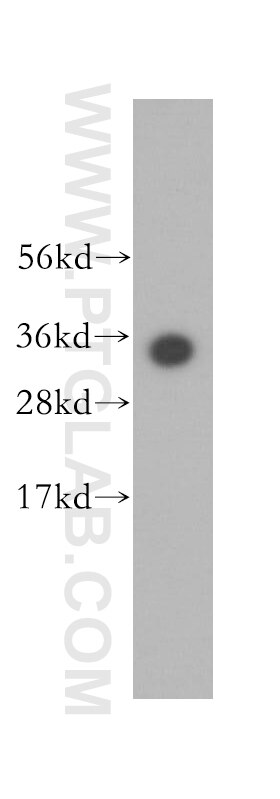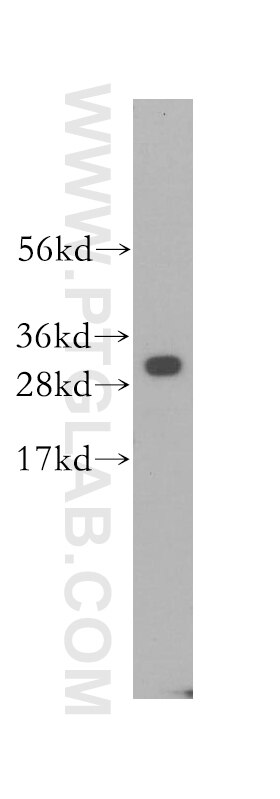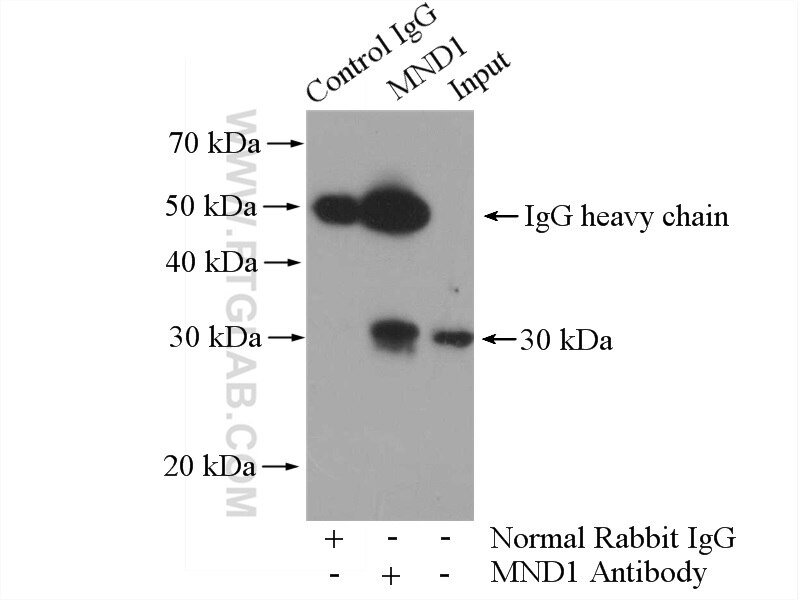MND1 Polyclonal antibody
MND1 Polyclonal Antibody for WB, IP, ELISA
Host / Isotype
Rabbit / IgG
Reactivity
human, mouse
Applications
WB, IP, IF, ELISA
Conjugate
Unconjugated
Cat no : 11636-1-AP
Synonyms
Validation Data Gallery
Tested Applications
| Positive WB detected in | HepG2 cells, mouse liver tissue, human lung tissue, human kidney tissue, human liver tissue, MCF-7 cells |
| Positive IP detected in | mouse liver tissue |
Recommended dilution
| Application | Dilution |
|---|---|
| Western Blot (WB) | WB : 1:500-1:3000 |
| Immunoprecipitation (IP) | IP : 0.5-4.0 ug for 1.0-3.0 mg of total protein lysate |
| It is recommended that this reagent should be titrated in each testing system to obtain optimal results. | |
| Sample-dependent, Check data in validation data gallery. | |
Published Applications
| KD/KO | See 1 publications below |
| WB | See 1 publications below |
| IF | See 1 publications below |
Product Information
11636-1-AP targets MND1 in WB, IP, IF, ELISA applications and shows reactivity with human, mouse samples.
| Tested Reactivity | human, mouse |
| Cited Reactivity | human |
| Host / Isotype | Rabbit / IgG |
| Class | Polyclonal |
| Type | Antibody |
| Immunogen | MND1 fusion protein Ag2210 |
| Full Name | meiotic nuclear divisions 1 homolog (S. cerevisiae) |
| Calculated Molecular Weight | 205 aa, 24 kDa |
| Observed Molecular Weight | 30-35 kDa |
| GenBank Accession Number | BC032142 |
| Gene Symbol | MND1 |
| Gene ID (NCBI) | 84057 |
| RRID | AB_2266545 |
| Conjugate | Unconjugated |
| Form | Liquid |
| Purification Method | Antigen affinity purification |
| Storage Buffer | PBS with 0.02% sodium azide and 50% glycerol pH 7.3. |
| Storage Conditions | Store at -20°C. Stable for one year after shipment. Aliquoting is unnecessary for -20oC storage. 20ul sizes contain 0.1% BSA. |
Protocols
| Product Specific Protocols | |
|---|---|
| WB protocol for MND1 antibody 11636-1-AP | Download protocol |
| IP protocol for MND1 antibody 11636-1-AP | Download protocol |
| Standard Protocols | |
|---|---|
| Click here to view our Standard Protocols |
Publications
| Species | Application | Title |
|---|---|---|
Oncotarget A study of meiomitosis and novel pathways of genomic instability in cutaneous T-cell lymphomas (CTCL). | ||
Med Oncol Meiotic nuclear divisions 1 promotes proliferation and metastasis in hepatocellular carcinoma and is a potential diagnostic and therapeutic target gene
|
